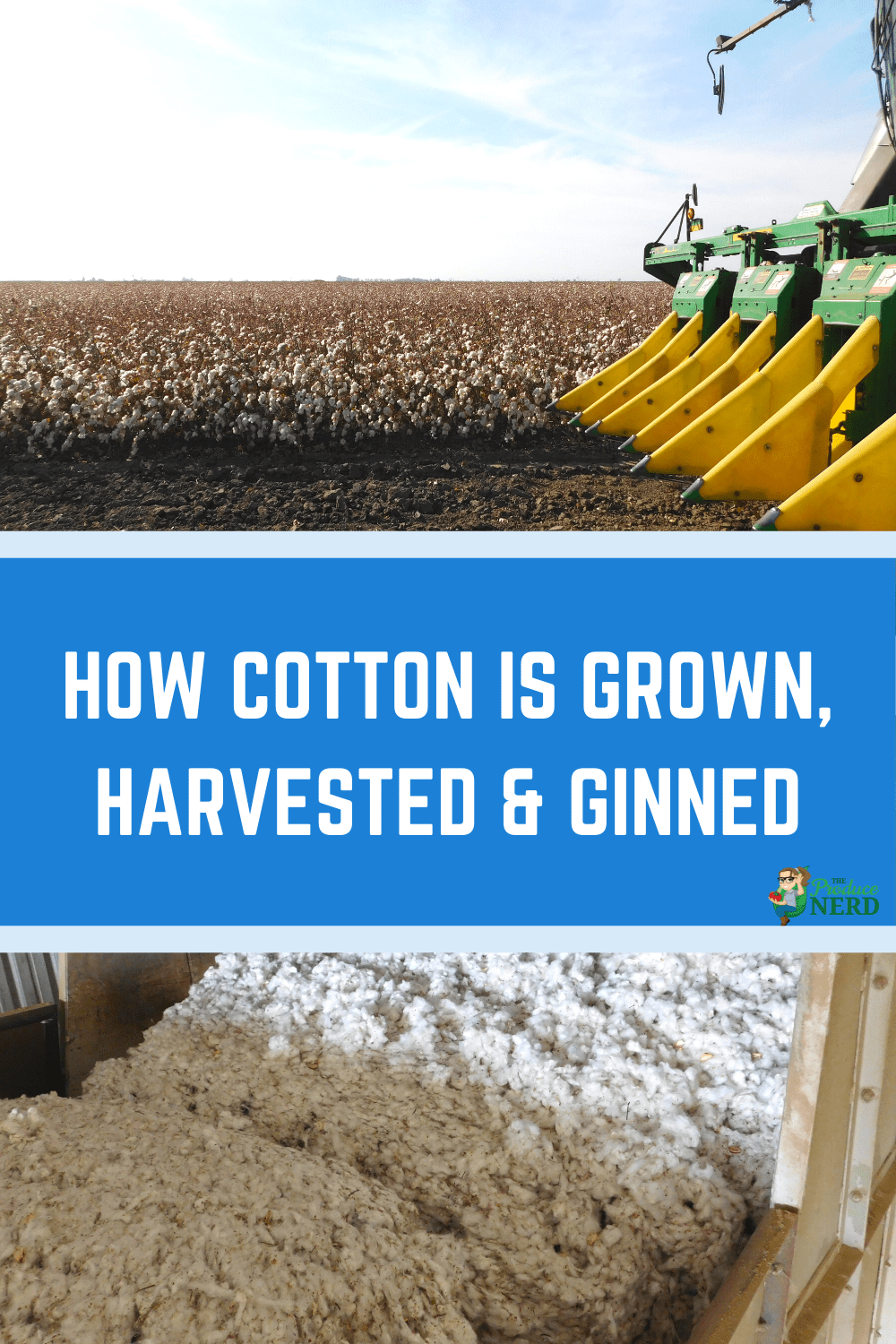I had never been to a cotton field before, and it was absolutely stunning! All of the cotton ready for the cotton harvest made it look like a field covered in snow! It is crazy to think that these magical fields are responsible for creating lots of our clothing and personal items. In fact, the entire cotton harvesting and ginning processes were really a sight to see!
California is a premium growing region for cotton, as it has the ideal growing conditions. (This is similar for a lot of other crops grown in California as well.) I recently went to Crivelli Farms in Dos Palos, California to learn all about cotton growing, harvesting and the ginning process.
Table of Contents
Cotton Harvest & Ginning Video
To see an overview of the entire process, check out the video below!
Growing Cotton
Types of Cotton: Pima vs. Acala Types
The two primary types of cotton grown are the Acala and Pima types. The Pima types can command about twice as much money per pound, as they have longer fibers. When looking at the actual cotton grown between the two plants below, you can see that the Pima cotton on the left is fluffier looking and not as ‘seedy’ as the Acala cotton on the right.
Planting Cotton
Cotton plants are biennial plants, meaning that they can grow and produce for two growing seasons. However, this cotton is grown as an annual crop, meaning that the growers put all of their effort into the growing process to produce an optimal crop each year. Then after the growing season is over, they remove the plants and start all over again the next year.
Cotton is planted based on the size of the growing area, while taking the size of the harvesting machine into consideration. The number of picking heads (yellow portion below) determine how many rows can be harvested at a time.
California Cotton Growing Season
The cotton growing season takes place between April and November. There is a harvesting window that takes place in mid-fall that the growers hope to finish by without any rains. When it does rain, it settles any extraneous materials on the cotton and makes it harder to perfect the cotton during the ginning process.
Harvesting Cotton
Cotton is harvested mechanically, which has been even more simplified with newer technology. The harvesting is done by a cotton harvesting machine and only requires one driver. The harvesting machine moves its way up and down the rows, pulling cotton from the plants, to form a wrap. The harvester moves through the field and is able to continuously form a wrap.
The cotton fibers grows out of the cotton seeds. When the cotton is harvested with the harvesting machine, everything is gathered: the cotton, seeds and other debris. (The seeds and other extraneous material are removed during the ginning process.) Once a wrap is complete, it is released at the end of the rows, without the harvester having to stop.
Cotton Module
A forklift then goes through the field to group four of the completed wraps. As a group, the four wraps make up the size of a module and can fill up a module truck when they come to the field. This extra step is done to make it easier on the module trucks, since each wrap weighs approximately 6000 pounds. The module trucks come through the field and transport the wraps to the nearby cotton gin.
Removal of Cotton Plants from the Field
Once a field has been harvested, a tractor goes through the field to cut down the cotton plants. They want to remove the plants from the field as soon as possible because if they stay in the field, they will continue growing. This will also lead to them harboring pathogens in the soil during the rainy season. Instead, the tractor goes through and chops up the plants, which are then tilled under.
Ginning Cotton
The cotton gin is where the harvested cotton is purified. The cotton arrives at the cotton gin in wraps from the field. Those wraps are transferred onto a conveyor line, where the wrap is cut and the machinery removes the seed and other impurities in the cotton. When cotton grows, it grows out of the seed, so having the seed in the harvested cotton is unavoidable. Other impurities can include dust, dried leaves, or any other field debris that might be present at the time of harvest. Another thing to consider is that cotton is harvested in the fall and if the rains hit before the harvest is over, the water helps some of that field debris to penetrate into the cotton and makes it that much harder to be removed during the ginning process.
After going through the ginning process, the cotton results in the form of cotton bales (picture below on the left). The seeds that have been removed are piled up (picture below on the right) and are sent off to be used for animal feed.
California Grown Cotton DNA
One extra step that the California grown cotton goes through is that it is sprayed with DNA to distinguish that it was grown in California. It is then stored until purchase.
Featured Grower Information
I would like to send a big thank you to Crivelli Farms for the tour and for allowing the gathered content to be shared. Crivelli Farms is located in Los Banos, California and grows cotton, melon, squash, corn, pomegranates, and much more! To see more from Crivelli Farms, you can check out: Corn Silage Production and Pomegranate Harvesting.
If you enjoyed this post, please share it!
Some other posts that may be of interest:

How much is a cotton harvesting machine